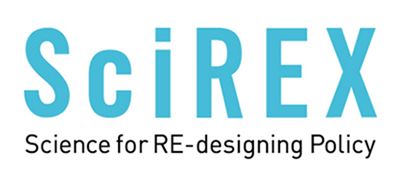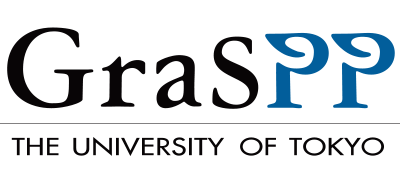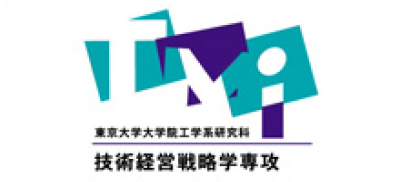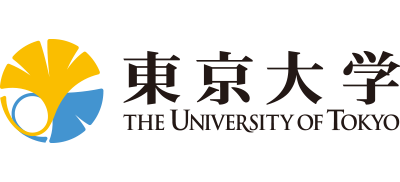Feeding Research Results into Policy Formulation

2. From Priority Issues to Coevolution Projects
—— Background, purpose and overview of common initiatives across all SciREX centers
❖ Priority Issues 2016-2018
In April 2016, the Japanese government’s fifth Science and Technology Basic Plan set out “priority issues” for STI policy. The four priority issues, serving as pillars of STI policy (individual STI policy issues), are as follows.
- ① Super-smart society and STI policy
- ② Measures to counter declining national birthrate and aging society and STI policy
- ③ Regional revitalization and STI policy
- ④ Open innovation policy and industry-academia partnerships
Under the fourth theme of “open innovation policy and industry-academia partnerships,” the University of Tokyo embarked on a research project titled “Industry-university-government collaboration to create innovation: Knowledge management and system design” The overview of the project is as follows
- Overview
- What are the types of organizations and systems that are required for universities to create new knowledge together with industry, public institutions, and other bodies, and to utilize this knowledge effectively in society in order to create innovation? The study will consider the current issues and assess the future possibilities from the perspectives of risk management and open science in industry-academia-government collaboration.
- Project leader
- Hideaki Shiroyama (Professor, Graduate School of Public Policy, University of Tokyo)
- Primary research center
- University of Tokyo
- Participating research centers
- GRIPS, Osaka University, Kyoto University, Kyushu University
For the University of Tokyo, the aim was to objectively analyze, through a larger framework, the modalities for industry-academia collaboration and how to manage conflicts of interest arising from such collaborations. Also, based on one of the other policy pillars, “super-smart society and STI policy,” we conducted research on open data and other topics within the larger context of industry-academia collaboration.
When publishing research results, the mutual use of open data creates synergistic effects on the one hand, but gives rise to issues relating to conflict of interest on the other, namely, how to guarantee the credibility of the university’s research activities, and how to design an appropriate system for ensuring such credibility. This is further compounded by security issues, and, as the economic value of data has increased, achieving greater clarity around the concepts of data sharing and management has become an extremely important mission.
As for the use of data in industry-academia collaboration, although some issues remain, such as barriers to sharing individual case studies among universities, it is of great significance that STIG has initiated a fundamental research project involving research and analysis that has a greater basis in actual conditions than the past.
❖ Coevolution first phase: from FY2019
In contrast to projects based on priority issues, where problems tended to be set by researchers, Coevolution Projects are built around issues raised by policymakers and shaped by several rounds of discussions on themes for study, etc.
For example, the Office for Space Utilization Promotion submitted a proposal concerning the current status of university-based capacity building support activities related to space and a more effective future framework. As the University of Tokyo was already engaged in research on space policy with the Japan Aerospace Exploration Agency (JAXA), we adopted space-related themes as a course subject, as an example of ways to bridge public policy and technology, from the early days of STIG. We shared a common perception of the issues with JAXA and decided to implement a project titled, “Empirical study contributing to the development of a national scheme for university-driven space technology development and utilization capacity building with emerging economies and consideration about the potential for deployment of such a scheme.”
- Overview
- The study will engage in analysis of the current status of capacity building support activities conducted predominantly at universities in the field of space technologies and a more effective future framework, and consider the potential for application and deployment in other related fields for international cooperation.
- Project leader
- Hideaki Shiroyama (Professor, Graduate School of Public Policy, University of Tokyo
As this project was implemented predominantly in English, we were able to exchange information not only with domestic institutions such as Hokkaido University and Tohoku University, but also with those abroad, such as Sapienza University of Rome, and gain a specific understanding of the various research contents. In addition, we were also able to interview a number of companies that are involved in technical cooperation and have been spun out from universities in the UK, Italy and the Netherlands, etc., making it possible to compile a considerably in-depth report. Our next step is to determine how to feed the outcomes of this study into policy.
❖ Coevolution preparation stage: from FY2019
Although the Coevolution Program began in FY2019, budgetary considerations meant that projects were separated into two types: full-scale projects and preparatory-stage research that would be continued if further developments seemed forthcoming. The space-related study introduced above in the first phase of the Coevolution Program belonged to the former category. In general, each center took one such major project, implemented over a two-year period. In addition, they took on multiple research projects that fell into the preparatory-stage category, which in principle were implemented for one year. The following are two examples of such projects implemented at the University of Tokyo.
◆ Research on strategic policy examination of decision-making process for large scale project support
This academic research focused on leading large-scale projects such as the Subaru Telescope in Hawaii, large radio telescopes, helical devices for nuclear fusion, accelerators for particle experiments, and the Super-Kamiokande detector for neutrino research. These projects share several characteristics, including the need to construct large facilities at great expense, the immense operating and maintenance costs required to advance research, and the fact that they are all long-term research undertakings, measured in 10-year units. They also all share the common challenge that, once started, it is difficult to change the project’s pace or direction, even in the event that other research themes arise.
Therefore, we compiled an interview list in consultation with policymakers and conducted interviews on the policymaking processes and the renewal or replacement of such large-scale projects.
- Principle investigator
- Makiko Matsuo (Project Assistant Professor, Graduate School of Public Policy, University of Tokyo)
◆ Research on the analysis of the current situation for young researchers and support for the formation of attractive career paths
The motivation behind this research project came from the perceived problem of young people moving away from academia and, in particular, a steep decline in those advancing to doctoral courses. The decline in the number of PhD students has continued for many years and is not in itself a new problem, but little research into the factors behind this decline has been conducted, either in Japan or globally.
We implemented a study based on the hypothesis that trends in the number of people advancing to doctoral education are significantly influenced by the research aptitude and abilities of students. The study had a two-stage design, the first being to ask master’s degree students to evaluate their instructors, and the second being to examine students’ career choices. The results of this study showed that while outstanding students with a high degree of aptitude for research still tend to advance to doctoral courses as in the past, there are also many students with high aptitude who choose not to do so, for already well-known reasons such as unclear career prospects after receiving a doctorate and instability in terms of life planning. This tendency was most striking in female students. Despite constituting a good proportion of the total study sample, none of them went on to pursue a doctorate.
Among students with high research aptitude, there was a very strong desire to return to their studies after completing their master’s, but as working students. This is a valuable insight for the future design of doctoral programs. Looking ahead to a time in the future when almost half of people with doctorates are working outside of academia, it will become necessary to also examine aspects such as age group bias and the nature of the academic community. In that sense, future-oriented research is required to identify the next research topics.
- Principal investigator
- Sotaro Shibayama (Visiting Fellow, Institute for Future Initiatives, University of Tokyo)



